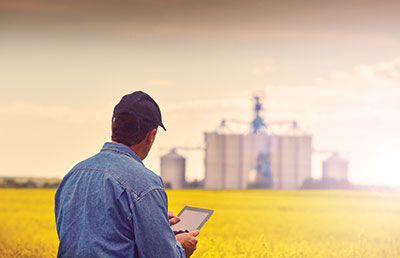
There are three basic ways assets are treated for tax purposes. Weigh the pros and cons of each when developing a financial plan for your farming operation.
Key insights
- Using financial and tax planning to balance your mix of assets can help your farm family prepare for transition events.
- Assets in the “taxable” bucket are typically highly liquid and the least restrictive.
- Shifting wealth into the “tax deferred” bucket can reduce a current tax liability, but flexibility could be an issue.
- Money in a tax advantaged account such as a Roth IRA can be withdrawn tax free.
Need help balancing your mix of assets?
When driving a nail, you can use a pair of pliers, but a hammer works better. The same thought process can be used when thinking about your farm’s assets and how they are taxed. There is no one-size-fits-all solution, but financial and tax planning is the better tool to use.
Utilizing the three asset “buckets” — taxable, tax deferred, and tax advantaged — and understanding the different characteristics of each can help you answer many questions:
- How should you balance your farm operations, while also funding retirement?
- Should you attempt to reduce current tax as much as possible or plan for future tax liabilities?
- What assets are available if your farm experiences a low-income year?
Based on your specific goals and objectives, financial and tax planning can help you decide which mix of buckets works best for you — and how full those buckets should be.
Taxable bucket
The taxable bucket is the least restrictive of the three; however, a current tax obligation comes with any income and growth the instrument may have. Typical assets in this category include:
- All farm operations, including cash rent for land and crop sharing
- Investment accounts
- Money market accounts
- Certificates of deposit
- Savings accounts
One key attribute of this group is the ability to withdraw or realign these investments at any point without penalty, and with only potential tax due. However, any realized gains associated with the liquidation of the investment, equipment, etc., result in an immediate taxable event.
This bucket can be useful when liquidity is needed for farm equipment and land purchases, or as a short-term parking spot for cash between revenue cycles.
Tax deferred bucket
To balance the taxable bucket, a traditional retirement account (401(k), 403(b), 457, or IRA) or a pension plan can reduce a current tax liability while shifting wealth into the tax deferred bucket — where taxes are owed only upon withdrawal. However, there may be some flexibility restrictions. For employee-sponsored plans, you generally must be separated from employment and over the age of 59½ to access the money penalty-free. For pre-taxed retirement plans, you must take required minimum distributions at age 72.
For farmers, these strategies can be beneficial, for example, when grain prices are high. Some of the tax liability can be deferred to retirement — by which time your tax bracket may be lower.
When reducing current tax liability, this bucket may be a good alternative to buying physical assets, such as equipment, as these accounts can act as a form of estate liquidity when passing assets to heirs. If money is needed for operations during the estate transfer process, heirs can use these assets to continue farm operations. However, this may not be the best fit if you’ll need to access the money before age 59½.
Tax advantaged bucket
This bucket is funded with after-tax money. If you are using accounts such as a Roth IRA or 401(k), the growth can be withdrawn tax free. Tax-free growth can also be utilized in the cash value portion of some life insurance policies, and municipal bonds can provide the owner with tax-free income.
One of the pros to these accounts is more flexibility when it comes to withdrawals. Since the contributions to a Roth IRA are after tax, they can be withdrawn before age 59½ without penalty; however, the growth cannot be withdrawn without penalty until after that time. The biggest con is that the Roth has income limitations for eligibility.
Assets with beneficial tax treatment can be a great complement to the other buckets. For example, if you want to retire early (pre-59½) or think you might need access to cash for a large purchase, these strategies may fit your goals.
Filling the buckets
There are a lot of overall factors to consider when determining how and when to fill each bucket:
- Current and future tax obligations
- - It may be tempting to reduce tax liability as quickly as possible; however, it may be more beneficial to realize some taxable income now (especially if you’re in a lower income tax bracket this year) and utilize tax-free growth.
- Liquidity needs
- - Purchases of new equipment, cash flow to increase land ownership, early retirement, or estate transfers may dictate your allocations.
- Eligibility requirements
- - Select accounts may have age and/or income restrictions as well as funding limitations. Your income and financial needs will likely shift from year to year, so monitor these carefully.
While balancing the pros and cons of each bucket, discuss your own scenario with your CPA and wealth advisor. Just as the farming world changes every year, so too can your financial alignment.
How we can help
At tax planning time, farm families and their advisors should have a financial plan that maps out the future so they can think about some of the unknowns. CLA’s industry professionals can help you understand the many options you have to pay yourself, fund your operations, and prepare for retirement.
